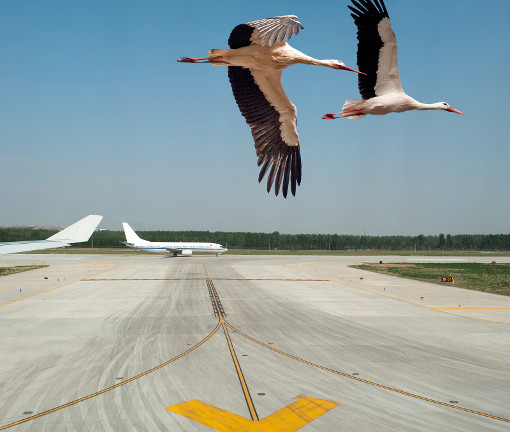Airports
Pilot Checklist to Prevent Wildlife Strikes
Air operators provide the support and infrastructure that ensures their pilots’ ability to conduct safe aircraft operations and prevent wildlife strikes. With respect to wildlife foreign object debris/damage, air operators can provide standard operating procedures, employee training and awareness programs, and the structure required for an effective wildlife strike reporting system that links with the national regulatory agency’s reporting system. Standard operating procedures should be established for flight operations (pilots), flight dispatch (flight planning and flight following), aircraft maintenance and ramp operations (aircraft ground handling).
Suggested Resources
Check out our articles on How To Prevent FOD at Your Airport or How to Set Up a FOD Program for more great ideas.

One important contribution of how pilots can prevent bird strikes on aircrafts is to remain aware of the extensive damage that can be caused to aircraft by wildlife strikes. Probability and severity can be reduced through proper flight planning procedures and the use of appropriate aircraft operating techniques. The recommendations provided in this pilot’s checklist are based on well-documented best practices and are not meant to supersede any procedures contained in approved pilot’s operating handbooks or aircraft operating manuals.
During the flight planning process, review available information on potential and known wildlife hazards at your departure airport, arrival airport and enroute.
During pre-flight preparations, observe wildlife activity at the airport and be alert for bird nesting material in airframe cavities and engines.
During engine start, and in your review of emergency procedures, consider the procedures that may be applicable following a wildlife strike.
If you see unusual wildlife activity while taxiing, advise ATS providers, UNICOM and other aircraft.
Prior to initiating take off, check the runway for wildlife activity. If there are hazards, consider waiting until wildlife control officers can initiate action.
Use landing lights for all low altitude operations.
If a bird or mammal strike occurs during the take-off roll, a rejected take-off is the safest course of action when prevailing conditions are appropriate.
If there is reported bird activity, plan to operate the aircraft at reduced airspeeds to minimize impact force and aircraft damage.
The best way to reduce the probability of a bird strike on departure is to maximize the rate of climb
In a light aircraft or helicopter, bird strikes can penetrate the windscreen. If this occurs, remember that your first priority is to fly the aircraft. If you have difficulty imagining this, hang your head outside a car window being driven at 70 mph as a passenger.
If birds are encountered on approach, consider a go-around and attempt a second approach. But only if the go-around can be initiated without striking birds after power is increased.
If a bird strike occurs when a landing is assured, a go-around is likely not appropriate
If a wildlife strike has occurred, immediately report the incident to appropriate authority and include as much detail as possible including the species of wildlife involved.
It is the pilot’s responsibility to ensure the safe operation of the aircraft during flight time. Therefore, the pilot has a vested interest in seeking ways to reduce the probability and severity of wildlife strikes.

